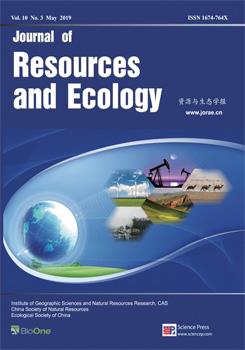A combination of rapid industrialization, economic development and urbanization has caused a series of issues such as resource shortages, ecosystem destruction, environmental pollution and tension between human needs and land conservation. In order to promote balanced development of human, resources, ecosystems, the environment, and the economy and society, it is vital to conceptualize ecological spaces, production spaces and living spaces. Previous studies of ecological-production-living spaces focused mainly on urban and rural areas; few studies have examined mountainous areas. The Taihang Mountains, a key area between the North China Plain and Beijing-Tianjin-Hebei area providing ecological shelter and the safeguarding of crucial water sources, suffer from increasing problems of fragile environment, inappropriate land use and tensions in the human-land relationship. However, studies of the ecological, production, and living spaces in the Taihang Mountains are still lacking. Therefore, this study, based on the concept of ecological-production-living spaces and using data from multiple sources, took the Taihang Mountains as the study area to build a functional land classification system for ecological-production-living spaces. After the classification system was in place, spatial distribution maps for ecological, production and living spaces were delineated. This space mapping not only characterized the present land use situation, but also established a foundation for future land use optimization. Results showed that the area of ecological space was 78,440 km2, production space 51,861 km2 and living space 6,646 km2, accounting for 57.28%, 37.87% and 4.85% of the total area, respectively. Ecological space takes up the most area and is composed mainly of forests and grasslands. Additionally, most of the ecological space is located in higher elevation mountainous areas, and plays an important role in regulating and maintaining ecological security. Production space, mostly farmlands sustaining livelihoods inside and outside the region, is largely situated in lower elevation plains and hilly areas, as well as in low-lying mountainous basins. Living space has the smallest area and is concentrated mainly in regions with relatively flat terrain and convenient transportation for human settlements.
How to translate text using browser tools
3 June 2019
A Functional Land Use Classification for Ecological, Production and Living Spaces in the Taihang Mountains
Geng Shoubao,
Zhu Wanrui,
Shi Peili
ACCESS THE FULL ARTICLE

Journal of Resources and Ecology
Vol. 10 • No. 3
May 2019
Vol. 10 • No. 3
May 2019
ecological-production-living space
land classification system
land function
spatial pattern
the Taihang Mountains





